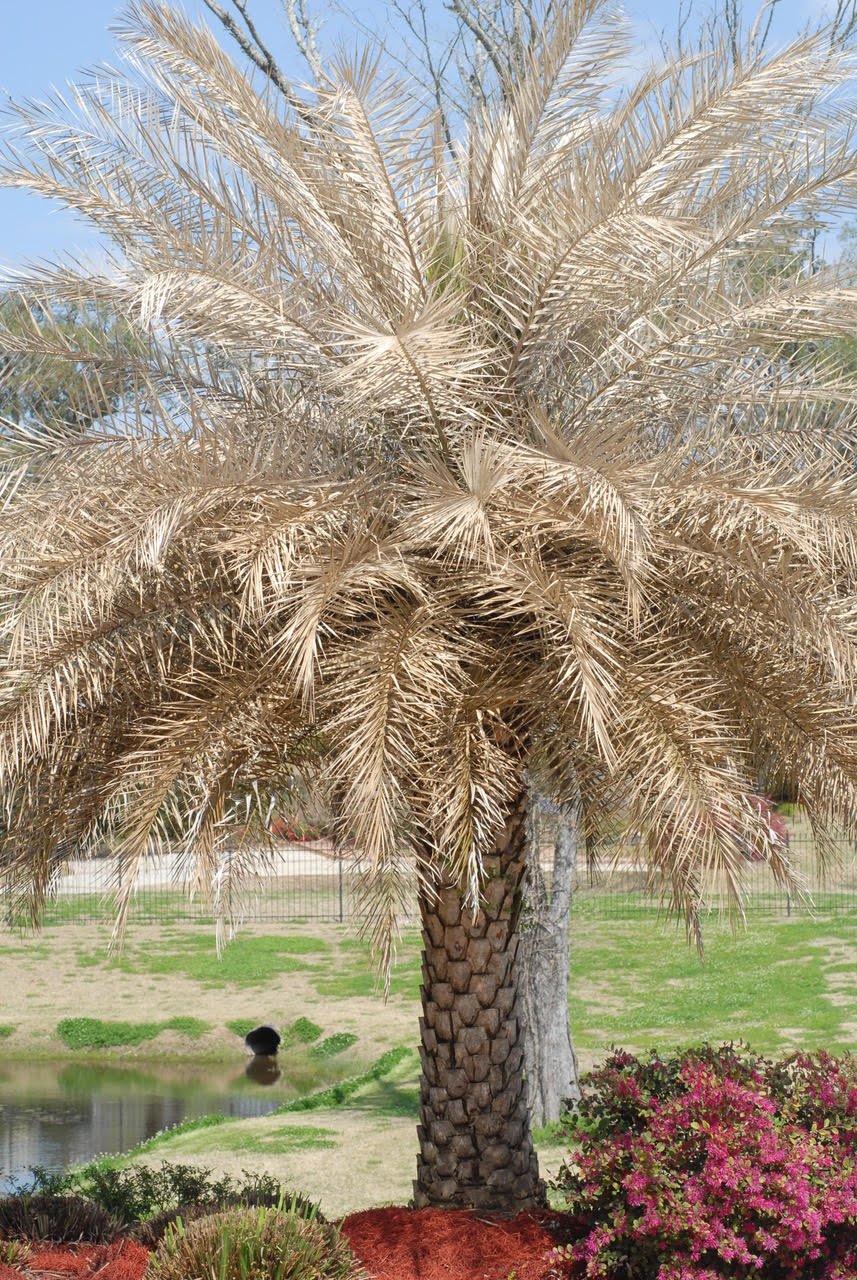Caring for Freeze-Damaged Palms in Southern Louisiana: A Guide for Homeowners
Palms are an iconic feature in southern Louisiana's home gardens, public parks, and roadside medians. With their towering trunks and fan-like fronds, they add a touch of tropical beauty to the landscape. In fact, Louisiana is home to 21 different palm species, including popular varieties such as the cabbage palm, Canary Island date palm, Chinese windmill palm, edible date palm, queen palm, and silver date palm.
However, the state’s occasional cold weather can take a toll on these otherwise tropical plants. In particular, the winter weather experienced during Mardi Gras this year caused significant damage to many of Louisiana’s palm trees, with low temperatures and freezing conditions affecting a variety of species. If your palm tree has been impacted by the recent freeze, understanding the types of cold-related damage it can sustain is key to determining how to care for it and when to expect recovery.
The Anatomy of a Palm
Palms are unique among plants—they are monocots, which means they are grass-like flowering plants. Unlike most trees, they do not have traditional branches or secondary growth. Instead, palms have a central growing point called the apical meristem, or heart, located at the top of the tree. This is where all new fronds (leaves) emerge. If the meristem is damaged, the entire palm can die, even if it is fully grown and established.
Cold Damage to Palms: What to Expect
Palms are native to tropical and subtropical climates, though some varieties, like cabbage palms and Chinese windmill palms, are more cold-tolerant. However, even these hardy species are vulnerable to extended periods of freezing temperatures. During this year’s cold snap, palms such as the Canary Island date palm, edible date palm, queen palm, and silver date palm took the brunt of the damage. Even windmill palms in some areas were affected, though the damage was not as severe.
Typically, freeze damage to palms begins to show up about 7-10 days after the cold temperatures subside. If you are dealing with a freeze-damaged palm, it’s important to understand the different types of injury they can suffer:
Types of Cold Injury
Chilling Injury: This occurs when temperatures drop into the 40-45°F range, but remain above freezing. The result is browning or necrosis of the fronds. Chilling injury is generally not fatal, and most palms recover fully as temperatures warm.
Frost Injury: When the temperature dips below 32°F, frost injury occurs. The damage is similar to chilling injury but can be more severe. Palms affected by frost injury may take a year or more to fully recover, as they grow slowly compared to other types of plants.
Hard Freeze Injury: This is the most dangerous type of cold damage. Prolonged freezing temperatures not only damage the fronds but can also kill the apical meristem. If the meristem is killed, the palm will not be able to produce new growth, and the tree will eventually die. Additionally, severe freezes can cause cracks or longitudinal splits in the trunks of certain palms like queen and silver palms, which can lead to further decomposition and rot.
What to Do After a Freeze
If you have a freeze-damaged palm, the key is patience. Don’t rush to remove the brown fronds immediately. If any part of the frond is still green, it’s best to leave it on the tree for as long as possible. This green portion helps the palm produce sugars through photosynthesis, which aids in recovery. Palms typically begin their growth later than other plants in the spring, so don’t expect to see new growth right away.
Wait until the risk of further freezes has passed before removing damaged fronds. Avoid irrigating or fertilizing freeze-damaged palms right now. Fertilization should be reserved for the active growing season, which runs from late spring through early fall. Be sure to water your palm properly during the summer to avoid drought stress.
Preventing Cold Damage
While there’s no way to protect the palm's apical meristem from freezing, you can take some steps to help your palm during cold snaps. Wrapping the trunk in burlap or using a frost protection blanket can shield the trunk from damage. However, this will not prevent damage to the growing tip at the top of the plant.
If your palm does not produce new growth after the freeze, it may need to be replaced. The best time to plant a new palm is in early summer, as root growth is optimal during the hot summer months of June, July, and August. Additionally, new palms will benefit from fertilization in early summer.
When selecting new palms, consider choosing cold-hardy species, such as cabbage palms and windmill palms, which are more likely to withstand Louisiana's occasional cold weather.
Conclusion
While the freezing temperatures of winter can be harsh on palm trees, with patience and proper care, many palms can recover from cold damage. Understanding the types of freeze injury and the best practices for caring for your palms can help you ensure that your landscape remains lush and beautiful, even after a harsh winter. Keep these tips in mind and be prepared to give your palms the time and care they need to bounce back.
Information provided by Dr. Raj Singh, LSU AgCenter Plant Diagnostic Center


